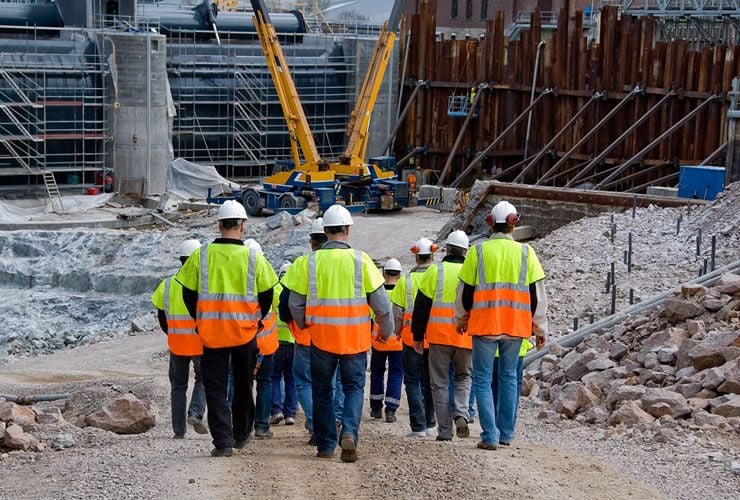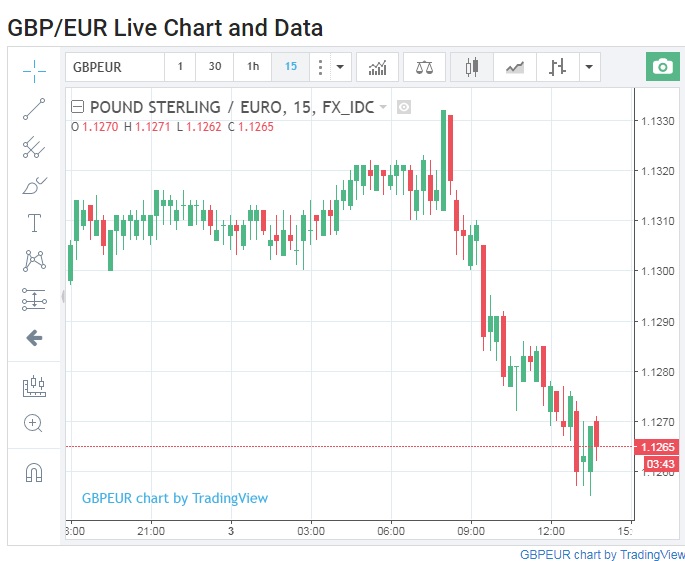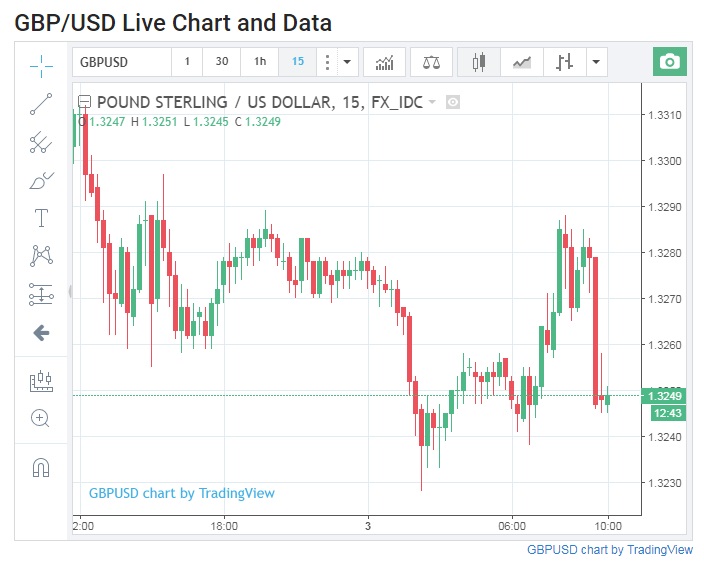Pound Sterling hit by UK Construction PMI Shock
- Written by: James Skinner

Political uncertainty has hit activity in the UK construction sector, sending the British Pound lower against the Dollar and Euro.
The IHS Markit UK construction PMI data for September came in worse than economists had forecast, dropping beneath the crucial 50.0 no-change threshold and placing industry conditions in contractionary territory for the first time since August 2016.
September’s PMI dropped to 48.1, down from 51.1, missing economist expectations for a steady no-change print.
The fall below the 50.0 level is significant because at this point industry conditions are neither expansionary nor contractionary. Therefore, the dip in September means the UK construction industry is now shrinking.
“A shortfall of new work to replace completed projects has started to weigh heavily on the UK construction sector,” says Tim Moore, associate director at IHS Markit. “Aside from the soft patch linked to spending delays around the EU referendum, construction companies have now experienced their longest period of falling workloads since early-2013.”
UK construction PMI slipped below 50 in Sep, suggesting sector heading for recession. Output on course to fall by c.0.5% in Q3, same as Q2: pic.twitter.com/yAY8eJJHod
— Samuel Tombs (@samueltombs) October 3, 2017
IHS said the fall in new work was itself the result of fragile confidence and risk aversion in the commercial building sector. Civil engineering was also a weak spot, with the sector seeing its sharpest fall in four and a half years due to an absence of new infrastructure projects to replace those which have concluded.
"Survey respondents widely commented on a headwind from political and economic uncertainty, alongside extended lead times for budget approvals among clients," say IHS Markit, in its report.
The outcome was immediately evident across the Pound exchange rate complex:

The Pound extended recent losses against both the Dollar and the Euro in response to the release, with the Pound-to-Euro exchange rate falling 30 points to 1.1284 while the Pound-to-Dollar exchange rate dropped 20 points to 1.3251:

“The bad news just keeps coming for embattled Prime Minister Theresa May," says Dennis de Jong, managing director at UFX.com. “It’s likely that the ongoing Brexit uncertainty is deterring constructers from committing to projects due to doubt over their long-term future – something Mrs May can certainly empathise with, as her position as PM looks increasingly unstable.”
Once again, residential construction remained a bright spot with expansion continuing during the month, although a slowing in the pace of growth was also observed here.
Prime Minister Theresa May said Monday that the government will extend its Help-to-Buy deposit guarantee scheme by an additional £10 billion in order to help first time buyers get on the ladder.
This could help underpin demand in residential construction during the quarters to come although, whether this boost will be enough to offset weakness in the commercial sector is quite another story.
Tuesday’s construction survey comes closely on the heels of Monday’s manufacturing PMI and one day ahead of the crucial services industry PMI.
Monday, conditions in the manufacturing industry were seen easing back a touch more than was expected, although economists still see industrial activity growing at a healthy clip in the third quarter.
The Pound has recently undergone a sharp fall against the Dollar and many of its other G10 counterparts. Its reversal from recent gains began last Friday and persisted into the new week.
Get up to 5% more foreign exchange by using a specialist provider by getting closer to the real market rate and avoid the gaping spreads charged by your bank for international payments. Learn more here.
The London Skyline that Never Was
As we were mulling over what are clearly negative construction sector data, this image hits our desk:

It's what the London skyline would look like were construction projects always successful in getting off the ground.
Experts at LondonOffices.com have put together the image which includes many of London’s most iconic landmarks, such as the Gherkin, Walkie Talkie building and the Shard.
But it also includes eight buildings which were proposed for central London but never constructed after city planners gave them the thumbs down.
Among the eight are Sir Christopher Wren’s 1675 draft design for St Paul’s Cathedral, which featured a tall spire and a much smaller dome than the one which eventually became a London icon and a familiar sight to millions.
Also included in the fantasy skyline is the Citygate Ecotower, which at 108 floors and 485 metres would have dwarfed even the Shard but was rejected in 2007.
At the centre of the skyline stands the 91 metre high tower of the proposed Eco-energy station which was rejected by planners in 2008.
Also dominating the centre of the skyline is the very imposing Crystal Palace Tower. This building was drawn up by an architect way back in 1861 in response to a brief for ideas about what to do with the original Crystal Palace after the Great Exhibition.
At 300 metres tall it would have almost matched The Shard and been by far the highest structure in Victorian England. But, perhaps wisely, the planners said no.
Next we have Edwardian London’s answer to France’s Eiffel Tower. Our proposed response was the Watkin’s Tower which would have been taller than the Paris icon. Again, it seems the planners were unmoved, ordering the hastily erected base to be pulled down in 1907.
One of the oldest structures on our skyline is the 75m tall statue of Britannia which was proposed as an iconic landmark for London in the late 1700s. It never saw the light of day.
One of the most eye catching designs is the 442 metre tall Green Bird Building which was rejected by the planning department officials in the early 1990s. It would have been the height of one and a half Shards.
Finally we have the ‘Helter Skelter’ building aka the Pinnacle Tower which was proposed for the City in 2005.
Planners granted permission for the construction of a tower which would have stood at almost the same height as the Shard. Work began but was soon abandoned for business reasons. The site is now being redeveloped as a smaller building.
A Politics-Heavy Week: Conservative Conference In Focus
September’s PMI surveys hit the market at the opening of a week packed with political intrigue for Sterling, after the Conservative Party conference got under way at the weekend.
“It will be awash with stories of potential challenges to Theresa May’s leadership and with fierce arguments about the shape that Brexit should take,” says Guy Stear, an economist at Societe Generale.
The annual gathering of members from the UK’s ruling party runs until Wednesday, after kicking off on Sunday with a series of speeches and statements from various ministers.
"We think May will be able to converge towards the EU27 on financial liabilities and citizens rights without triggering a destabilizing leadership challenge," says Oliver Harvey, a macro strategist at Deutsche Bank.
Market sentiment toward the Pound is being driven from three directions at present.
On the one hand, a hawkish pivot by the Bank of England has helped boost the British currency in recent weeks, although the effect of this is now beginning to wane.
On the other hand, a tepid outlook for the domestic economy risks compromising a BoE push to withdraw stimulus, while concerns over the absence of progress in the so called divorce negotiations between the UK and the EU are a continuing threat to the Pound - despite tentative signs of progress.
"From the UK political perspective there are therefore two questions from this week's conference - will May converge and can the Conservative Party remain united if she does so?," asks Deutsche Bank's Harvey.
Other factors at play for Pound traders this week are a Wednesday speech from European Central Bank chief Mario Draghi and Friday’s monthly US nonfarm payrolls number. Both will also be able to influence key Sterling pairs from the opposite direction.




